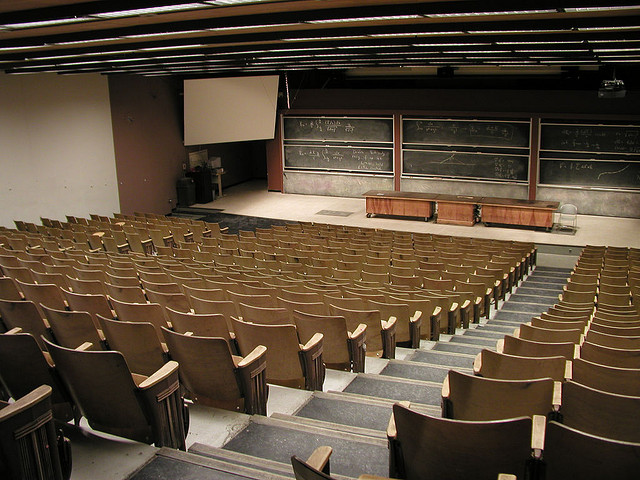The lecture is one of the oldest teaching strategies in the world, yet it remains one of the most controversial. Some faculty passionately argue for the value and effectiveness of lecturing while others suggest that the approach is one of the biggest challenges for helping college students learn. This debate has been in the forefront lately thanks to a New York Times column by Molly Worthen, “Lecture Me. Really.” Professor Worthen’s piece, while thought provoking, misses the mark in several places particularly in describing active learning as not much more than a fad. Moreover, her pieces failed to consider the growing and substantial body of empirical research on lecturing—research that shows the strengths and weaknesses of lecturing. My recent book with Claire Major and Todd Zakrajsek (Teaching for Learning: 101 Intentionally Designed Educational Activities to Put Students on the Path to Success) explores the research literature on lecturing and in today’s post I want to describe some of the key findings to provide empirical information to the lecture debate.

The primary purpose of lecturing is to transfer content and information from an expert faculty member to novice students. Lectures take many forms from formal lectures to lecture-discussions that include student questions.
In our work, we identified the following advantages of lecturing:
- Provides teachers with control of information and pacing of session
- Is rewarding for the teacher to be seen as expert
- Provides the teacher with a change to model desired level of thinking
- Allows teacher to model enthusiasm
- Provides all students with a common core of content
- Provides an opportunity to enliven facts and ideas from the text
- Provides teachers with ability to clarify issues
- Provides an opportunity to develop ideas (that may be later used for publications)
- Provides immediate recall of information by students
The weaknesses of lectures are:
- May not be as effective for higher order thinking
- May not improve student long-term retention of information
- Presumes students are learning at the same pace
- Does not allow for personalized instruction
- Can create opportunities for students to be passive
- Relies on student attention span
- Can be a disincentive for learning (if done poorly)
- Can lead students to believe that it is a complete learning experience
- Can lead to boredom on the part of professors and students
As with all teaching approaches, there are advantages and disadvantages of lecturing. So what should faculty do? In our review of the research literature, we identified five findings that can improve the effectiveness of lectures for instructors that desire to use lectures.
Additionally, much of the research that finds lectures as ineffective examined traditional, full class lectures. Recent studies suggest that lectures can be made more active and improve student learning if instructors can follow some of our suggestions below.
1. Use mini lectures with purposeful active learning breakouts to improve student learning.
2. Effective and guided note-taking during lecture can improve learning.
3. Focusing on the essentials can improve student learning, and help students figure out what is essential can improve learning
4. Frequent quizzing and testing can improve learning
5. Paying attention to style and pace of speech can improve learning
We go into more details on each of these in the book as well as providing specific activities to help instructors achieve these goals. Ultimately, what is most important is that faculty take the time to intentionally design their classroom activities whether lecturing or another approach.
No teaching strategy is perfect.
However, by learning from research and proactively planning, instructors can improve their teaching and student learning.

